HOME | ABOUT US | MEDIA KIT | CONTACT US | INQUIRE
HOME | ABOUT US | MEDIA KIT | CONTACT US | INQUIRE
A lot can happen in 400 years. We’ve gone from Jamestown to a nation of 323 million people, we’ve seen 32 men cycle through Rome as pope, we’ve moved from man’s first balloon flight to unmanned inter-
stellar journeys. Goodness, we’ve even seen the Chiefs get to the Super Bowl—twice. [Note to Millennials: That Super Bowl reference, in particular, is most definitely a collective “we.”]
And a lot can happen in the halls of academia in 400 years, as well. Take this year’s Icons of Education: 11 people who have devoted the majority of their lives to educating the generations that would follow them. Combined, these 11 have almost exactly four centuries of experience as teachers and administrators, giving form, direction and purpose to uncountable thousands of lives.
From the ranks of major research universities, from small private colleges, from K-12 settings, this year’s Icons have embraced the charge of passing the torch of knowledge on to succeeding generations. Truth be told, legions of other educational professionals have done the same. But this year’s honorees stand out for their impact as well as their commitment.
The profession of teaching, and of marshaling resources for teachers to be effective, is undergoing profound changes. The Internet has democratized knowledge, allowing it to be spread far and wide. But there’s more to teaching than merely passing on what’s been learned, because the opposite side of the coin of knowledge is wisdom.
And wisdom is the particular gift you’ll discern in the stories of each of these honorees. Please join us in congratulating teach of our honorees on what they’ve achieved—not for themselves, not for their students, but for all of us.
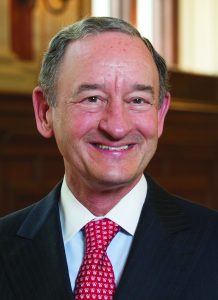
Mark Wrighton
Mark Wrighton
Washington University
Anyone impressed not just with Mark Wrighton’s academic track record (he finished college at age 20 and earned his PhD at 22) but what he did professionally should take careful note of the calendar: Come this June, Wrighton will complete his 22nd year as chancellor at Washington University in St. Louis.
The thing is, for all his efforts to build a global reputation for that private research university, he’s not nearly done. Consider the successes first: On his watch, the university has created more than 200 new endowed professorships for faculty, redesigned its arts and sciences curriculum, launched programs in biomedical engineering, public health and American culture studies, and completed an astonishing 50 new buildings for students in arts and sciences, business, design and visual arts, engineering, law, medicine, social work and residential life.
The first words out of his mouth, though, attribute those successes to the team he’s built over the past 22 years. “I don’t think at an institution like this that any single individual can take credit for any singular achievement,” he says. Still, there are three initiatives that he considers points of pride: First, raising the university’s profile among undergraduates, he says, so that “we are and able to attract talented people from all across the U.S., and indeed, around the world,” including a sharp increase in African-American students. Second is a focus on global networking that has yielded partnerships with 32 premier research universities around the world and creation of the McDonnell International Scholars Academy. The third is a big one: Development of the Alvin J. Siteman Cancer Center, in collaboration with BJC Healthcare; it now bears comprehensive-center status from the National Cancer Institute and leads the nation in the percentage of patients involved in clinical trials.
All well and good, but urgent work remains. For Wrighton, “one of the great opportunities ahead of us in connection with our work in the School of Medicine is to develop personalized precision medicine. This builds on our strengths in genetics and genomics. We are in a position, we believe, to make enormously important advances in personalized medicine, and this will have a lot of positives in terms of advancing human health.”
Finally, he notes, work must continue with educational programming. “Our aspiration is to be the best place to go to college in the United States, with graduate and professional programs that open paths for all schools to have an increase in quality and impact, and by doing so, take our place along the world’s most outstanding research universities.”

Clif Smart
Missouri State University
In less than six years as president, Clif Smart has overseen some improvements of vital metrics at Missouri State University: Enrollment is up roughly 12 percent, topping the 18,000 level. Numbers of under-represented students are up 33 percent; international student enrollment is up 18 percent. Private gifts and grant funding have hit record levels. Just the kind of numbers one might expect after decades in higher-education administration.
Except Smart hasn’t made a career of it—the presidency of MSU is his first university leadership role. Until 2007, he was a private-practice lawyer in Springfield—with a reputation as a good one—for more than 20 years. “I’ve had two great careers,” he acknowledges. “I look back fondly over my legal career.” But when the opportunity to become Missouri State’s general counsel arose a decade ago, “I was ready to do something different. It’s been absolutely a great ride for me in both careers.”
A ride made somewhat bumpier during his tenure by belt-tightening in Jefferson City. “I’m looking at that through the lens of just having rece-ived a 9 percent proposed budget reduction for next year,” he said, fresh out of a meeting with the campus CFO. “There are limitations that come with that. It’s very hard to grow excellence as money decreases.”
He still sees opportunities to expand MSU’s graduate and professional-degree offerings, but pulling that off and keeping the spirits up—his own, and those of the staff—“is absolutely hard. But I think you have do a couple of things: You focus on and remind yourself that we’re doing this for the students, and making a difference in the lives of students. We don’t want to quit on them.”
The second thing is to project a positive outlook. “People will follow our example,” Smart said. “If we are distraught over what’s happening publicly and project a world-is-ending mentality, people will think the world is coming to an end. We have to work hard not to do that.”
One powerful tool in the positive-outlook kit is a record of success, and Smart is able to wield it to great effect. “I think it’s important that we’ve kept tuition increases below inflation. It’s really important that we’ve had significant enrollment growth. It’s important that we’ve spent a really good amount of effort in updating and upgrading our facilities. But I think probably the most productive is creating a culture of openness and kindness, fairness to our employees and students, and demonstrating that this a great place to work. Those are the things that I really work on the most.”
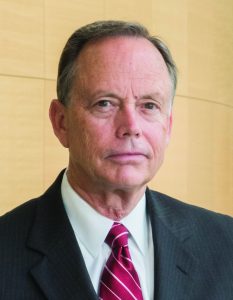 Steve Scott
Steve Scott
Pittsburg State University
Precisely 25.8 miles separate the city limits of Steve Scott’s home town, Baxter Springs, from the front door of the administration building at Pittsburg State University, so in every sense of the cliché, his is the Local Boy Makes Good Story, and one with a happy ending for all concerned. This isn’t just a job for Scott; it’s personal history, too. “I feel very fortunate to lead my alma mater,” he says. “I have connections that transcend the formal role I have and reach back to my childhood—the congregation that helped raise me, and the students and teachers from my high school days. This all provides me with a setting that makes my leadership more personal and mission-driven than most campus leaders. Fundamentally, I believe in this place and its importance because I know what it did for me, my family and the difference it’s made in the region.”
The real benefit of that nearly unique dynamic is that those connections, rather than complicating his administration of the university, sustain him in difficult times, Scott says. “People know that my interests are broader than my next career step .. .my interests are to advance the university and the region. Why? Because I care about both so deeply.”
That level of care comes back to him often, as people tell him how proud they are to have a “local” steering one of the leading economic engines in southeast Kansas. “Even after nearly eight years in this role, people still feel the need to express this to me. It’s probably an important lesson for Regents as they fill university CEO positions.”
Among his successes since becoming president in 2008, Scott counts the fundamental ability to lead the university thro-ugh a series of tough budgeting years, thanks to belt-tightening in the Statehouse. “The challenges we face have not diminished our commitment to our students and the region,” he says. “We are resolute in advancing the university, regardless of the financial pressures we face.” In the face of such barriers to success, Scott takes pride knowing that “we have had a number of remarkable successes that will affect the university for decades to come,” he says. “At this point, the project I’m most proud of is the completion of the $33 million Bicknell Family Center for the Arts,” which he says will inspire generations of students and area citizens, treating them to cultural amenities like Broadway shows and a national lecture series.
“Our spirits are buoyed by the students we serve and the difference we continue to make,” he says. “The faces of students crossing the stage … earning a Pitt State degree … is an image that keeps us focused and energized. I would not trade this role for any other role anywhere. I’d say that’s commitment.”
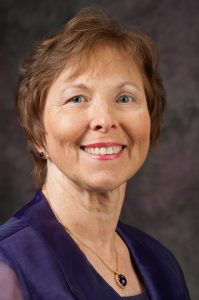 Carol Shanklin
Carol Shanklin
Kansas State University
Here are the pieces: Country-girl upbringing in a west Tennessee burg of 2,400 people. A 4-H participant at an early age, focusing on food preparation, clothing, leadership and camp counseling. Future Homemakers of America, Masonic group for women. Sunday school teaching, basketball at school. Valedictorian in a high school class of 32.
Knowing all of that, it should surprise no one that the completed puzzle of Carol Shanklin’s life is framed by a career at a land-grant college, one whose mission is tied to the land, the family and the community. “I’m a first-generation student in college, the first in my family,” she says. “Even though my parents didn’t have formal education—eighth-grade for my dad, GED for my mom—both valued education and knew how it could help you be successful.”
Shanklin is dean of graduate studies at Kansas State University, where she came to work in 1990 as a professor in what formerly was known as home economics. Her career has entailed research on food safety, biosecurity and process improvement in food-service operations, alternative approaches to waste management, and helping food-service operations reduce solid waste. She has also taught master’s and doctoral courses and mentored graduate students, serving as dean of the program the past eight years.
“Probably the hardest decision I’ve made was when I went from part-time associate dean to full-time, because I could not be engaged in teaching formal courses,” she says. To counter that, she mentors as many graduate students as time allows, and she’s first to raise her hand when there’s an opportunity to speak in research methods and grant-writing classes, or forums where she can help students prepare for grad education to distinguish themselves. “I say yes all the time because I have a passion for that teachable moment with students, whether it’s in a large or small group.”
Graduate programs constitute an area of higher-education administration that must fend off constant competitive challenges, thanks to on-line availability. But that playing field also offers opportunities for universities to distinguish themselves, she believes.
That’s done with on-line instruction for working professionals, hybrid courses for students who want occasional classroom experiences with face-to-face contact, and traditional paths of students moving from bachelor’s straight to grad school. For Shanklin, graduate school isn’t an end to itself, but a gateway to understanding that learning is a lifelong process. “If we’re to be successful as a nation, our institutions of higher learning have to look at the entire continuum of education,” she says.
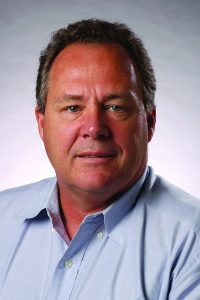 Jerry Taylor
Jerry Taylor
University of Missouri
Jerry Taylor was British by birth and Australian by virtue of his mother’s chronic bronchitis—a remedy for which, his parents determined in his early youth, was the dry climate of Adelaide, South Australia.
But the Mediterranean weather and ocean surf proved a bad combination as he grew up. “I got a bit out of balance, spent quite a bit of time sailing and surfing and riding cycles, not doing much in the way of schoolwork,” says Taylor, now a professor of animal sciences at the University of Missouri. “I was always able to do that and get away with it but it caught up to me my senior year.” He is, he says somewhat wistfully, “the only professor I know who failed high school his final year.”
Dad didn’t get angry—in fact, he helped young Jerry land a job at the General Motors plant that summer season. For 10 weeks. “Boy, was that an eye-opener,” Taylor says, reflecting on the days in triple-digit working temperatures. Properly motivated, he returned to school, finished, and set a course for college, where he majored—excelled, actually—in math. But along the way, he also had taken some classes in statistics, and relished the application of math in tasks like quality control, inferences in population behaviors, and statistical theory.
And that is an overly abbreviated map of how one goes from surfer head-case to honors graduate student to internationally known expert in the field of animal genomics, based in Columbia, Mo. At Mizzou, Taylor works primarily with graduate students to break new ground in genetics research.
Along the way, he’s married his love for science with a zest for the written word, becoming a prolific and high-
ly successful grant-writer.Those skills—ability to see a need that can be met only by research, and to tell a compelling story of why that work must be funded—have helped him raise more than $43 million in research funding over his career and bat 1.000 with USDA grant applications, going 12-for-12 in an endeavor where one out of 10 is con-
sidered a good batting average by his peers.
The key to that level of success, he says, is being able to produce “a track record of over-delivering on grants. I was at a meeting in Salt Lake City this summer, and met a program officer who came up to me and said ‘You really do an incredible job with every dollar we give you.’ That’s a big part of it: Over-deliver and be highly productive, putting you in the right place to get the grants.”
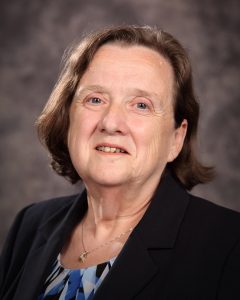 Penelope DeJong
Penelope DeJong
Park University
In her youth, Penelope DeJong was never very far from someone who placed a great value on education. Both of her grandmothers, she says, were teachers, but she also saw it at home in Maryville, thanks to the presence of her alma mater, Northwest Missouri State University. “We had a really big house not too far from the university,” she remembers. “We rented rooms to college women—back in the day when, if college women lived in town, they had to have university-approved housing. So as early as I can remember, I was surrounded by people who respected and revered education and worked hard to get it. It’s always been a part of my life, and always very important.”
She would leverage that influence into a pair of degrees from Northwest, including her MBA, and she earned a doctorate in marketing from Oklahoma State University. Business, DeJong said, seem logical “because I had to earn a living,” but when she crossed paths with Northwest’s Sharon Browning—the first woman in Missouri to earn a PhD in business—DeJong found a focus. “She was a totally outstanding woman, and she taught my first marketing class,” DeJong recalls. “And there I learned the importance of marketing.” And not just from a dollars-and-cents, bottom-line perspective, but a moral imperative. “She also taught me that the world isn’t a perfect place,” DeJong said, pointing to the long-running Nestle boycott over the Swiss company’s marketing of infant formula in Third-World countries. For years, the company has had to defend itself over claims that use of its products in poor nations increased infant deaths, because sales were targeted at those who couldn’t afford it. “That broke my heart; it really did,” DeJong said, “and I struggled with how can I change things so that it can’t happen again.” Browning taught her students that they had a responsibility to change the world together, “but I didn’t see how I could do that. So I decided I could teach, and make sure everybody hears that story.”
In 2010, DeJong came back closer to home when Park University recruited her from St. Cloud State. As associate dean of undergraduate programs in the school of business, she’s responsible for 11 undergraduate tracks serving more than 6,000 students in Parkville and at satellite campuses across the nation. “Park is a unique university and I love it,” she says. Her administrative roles have taken her out of the classroom, but she still feels like she shares in that moment when the light bulb goes on for students. “I may not be in the classroom, but I’m part of the process,” she says. “So I feel like in some small way, I’m still helping a lot of students be successful.”
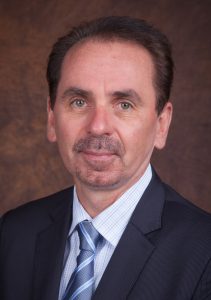
Julian Schuster
Julian Schuster
Webster University
Perhaps the greatest change in higher education in the past generation has been the democratization of knowledge, and not just because of Internet access. In the aftermath of the Soviet-bloc collapse, more people have been able to move freely about the world, and academic circles in particular have benefitted.
As provost at Webster University in the St. Louis suburb of Webster Groves, Julian Schuster doesn’t just work with that global trend—he’s lived it. He came to the U.S. after his native Yugoslavia broke up, triggering a calamitous civil war. But here, he’s found a home.
“If you go back 800 years in the church-based model of education, the churches sent missionaries around world,” dis-
tributing knowledge from those centers of learning, he says. “We don’t need to do that today. A high-school graduate in Albania has as much access to information as the CEO of Ford Motor Co.”
For universities, then, and especially for institutions that operate across national borders, like Webster, the imperative is meld your methods of delivery to different cultural settings with differing needs, Schuster says. “And at Webster, our mission was always to meet an unmet need.” That, he says, is what differentiates Webster, the seventh-largest non-profit university in the U.S. as measured by enrollment. “We do not approach internationalization from the imperial standpoint, that we know everything and we can go into Ghana and tell them what they need to know,” he says. “We try to lend our skills, our understanding to increase the capacity of people in those countries in which we operate. We, in the meantime, learn and transform ourselves.”
The result is an amalgam of students from 140 nations, operating in eight countries on four continents. And even the U.S.-born among the student body aren’t educated in an American silo: “The majority are from a radius of 100 miles,” Schuster says, “but they have opportunities to study in Austria, Greece, Switzerland, Ghana and China. This requires more effort on their part, but when they return, they are more culturally sensitive and better equipped to operate in the world.”
A native of the region that encompasses present-day Croatia and Serbia, Schuster studied economics and international economics, with a minor in finance and accounting, at the university of Belgrade.
That predated schools of business, and popular options from those academic tracks were international business or diplomacy. In 1988, he came to the U.S. as a visiting lecturer at the University of Connecticut-Storrs, and, he says, “one thing led to another” and he ended up staying.

John Bardo
John Bardo
Wichita State University
John Bardo’s first career stop as a professor was at Wichita State University. Forty years later, his sixth career stop—and likely, his last—came on that same campus in the state’s largest city. But it’s not the same WSU that first beckoned a young sociology instructor, and before he’s done as president, it won’t be the same one that called him back to its leadership pinnacle in 2012.
On Bardo’s watch, and under his direction, the home of the Shockers is undergoing changes both physical and metaphysical. The physical ones are easiest to spot: Things like new student housing, or a commercial development that likely will include a hotel, or a pair of new buildings on a sprawling innovation campus that, at build-out, will sport 20 such structures with new and innovative approaches to instruction. And within that innovation lies the metaphysical change, for like every other campus in America, Wichita State is reinventing itself and its teaching methods to assure financial stability and long-term relevance.
That means creating new courses that may or may not en-tail college credit, some that could produce cetifications needed in a new economy, where education doesn’t stop—can’t stop, really—with a bachelor’s or graduate degree.
State-level disinvestment in public universities nationwide, Bardo says, is changing the very definition of education. “If we’re going to be successful in this new world, we have to find different ways to think about who the student is and how you are going to generate income,” he says. “The world has changed, and we’d better figure out how to survive.”
That my still sound new to a lot of people, but it’s the same approach to leadership that Bardo experienced as a first-year professor in Wichita. Lifelong learning, he said, was already being embraced there under the leadership of a predecessor, Clark Ahlberg, “and it’s one of the things, looking back, that’s helped me in my career, because they believed in that back then.” So impressed was Bardo that, upon his return in 2012, he had the facilities crew track down and restore Ahlberg’s desk, and he sits behind it today.
Asked about a pinnacle moment in four decades of achievement, he says, “this is going to sound homey, but it really was the day they called me and offered me this job.”
“I had been on the faculty here, I met my wife on this campus, and when I took my first job away from here to be a dean and moved up in higher-education administration, I made the assumption that I could never come back to this city except as a retiree.”
A native Ohioan, he long ago adopted Wichita as his hometown, and now says, “to come back and do these kinds of
things in your home—it’s very special.”
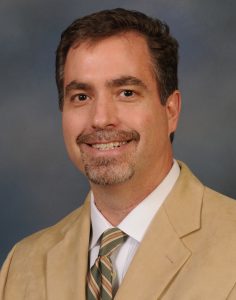 Russell Melchert
Russell Melchert
University Missouri-Kansas City
Prescription drugs are a big chunk of the U.S. healthcare spend, but in Missouri, there is only one state-funded program to produce pharmacists: the University of Missouri-Kansas City School of Pharmacy. Since 2010, that program has been under the direction of Russell Melchert, who as dean has helped it achieve national recognition for quality instruction and public-service commitment from its faculty and students.
In a state where 93 of 114 counties have fewer than 50,000 residents, Melchert is expanding the school’s reach. Satellite programs opened in Springfield and Columbia, drawing additional students into UMKC’s ranks.
“We’re now one program with three sites, which creates increased accessibility of pharmacy education to students all over Missouri,” he says. “We’re trying to get more—all health professions would say the same thing, but there’s a real shortage of health professionals in more rural parts of the country, especially rural Missouri.”
A native of Liberal, Kan., Melchert himself is a reflection of the challenges rural areas face in keeping skilled healthcare talent in town.
But in Kansas City, he’s found an anchor, and he hopes to instill more local pharmacy connections with his students. “If you go to pharmacy school and come to Kansas City, you’ll love it, and you don’t want to leave,” he says, drawing on personal experience. “I love Liberal, but I probably won’t go back. But if you get here, you’re more likely to stay, and if we can increase our presence in Columbia and Springfield, maybe we can get them to stay closer to home after they graduate.”
The first step on Melchert’s path to pharmacy education was something of a compromise between the possibilities of careers in healthcare. “I knew I liked everything about the health sciences, especially the biomedical sciences, but didn’t know whether I wanted to go to medical or dental school,” he recalls. “My mom told me to look at pharmacy, and I did, and fell in love with the science behind it.”
After moonlighting behind the pharmacy counter of a retailer while working on his advanced degrees, he fell for the a particular strain of pharmacy. “I realized my calling was that I wanted to teach,” he says. That led to the University of Arkansas’ medical campus in Little Rock for 15 years, and he rose to department chair of pharmacy sciences in the college of pharmacy before he showed up on UMKC’s radar. It’s been a perfect fit. “The default setting of people in Kansas City is Nice,” Melchert says “That’s not the case everywhere. This is a good place to be—a mecca for creativity, innovation and entrepreneurship, and we see all of those in the School of Pharmacy.”
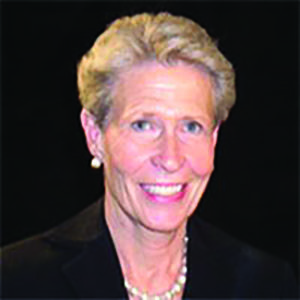 Nancy DeBasio
Nancy DeBasio
Research College of Nursing
Talk to a nurse about how she became inspired to enter that line of work, and there’s an excellent chance that it will come down to this: “My mother was a nurse.” Such was the case with Nancy DeBasio back in the Hudson River town of Newburgh, but her mother’s nursing career in itself didn’t make the lasting impression.
What the mother did to advance it, however, would shape the daughter’s life and career. “When I was in high school, she went back to get her BSN, which at that time, the mid-’60s, was pretty unusual.” DeBasio recalls. “She saw the value of nursing at the baccalaureate level, as opposed to diploma level or associate-degree level, then she became a school nurse.” Her mother’s respect for education would lead DeBasio to a career that spanned both fields, and at the end of this semester, she will retire after more than 40 years in nursing instruction, 28 of those at the helm of Research College of Nursing.
She earned her own degree at Wagner College, a nursing school on Staten Island—with her last year paid for by a grant from the National Institute of Mental Health—and earned her graduate nursing degree from NYU. She married, made several stops around the New York region, Philadelphia (she earned her doctorate in nursing there) and Chicago, then ended up in Kansas City, where her husband had taken a job as an executive with a large insurance company.
After a year spent co-authoring a book, she sounded out Research, and became associate dean for academic programs. It
was the last career move she would make.
“In 1992, my predecessor retired, I applied and was selected for the dual position of president and dean,” she says. She would carry on a strategic vision for program growth. Starting with a single bachelor’s degree track and 82 students, Research College has blossomed into a school with more than 400 undergraduate and graduate students, offering a BSN in both a traditional nursing and an accelerated program, a master’s in nursing, six graduate tracks and five post-master’s certificate programs. “It takes a team,” she says, to achieve such growth and earn the college a national reputation for instructional innovation.
An innovation, she says, will shape the future of nursing programs. The mission of nursing itself is changing as health-care market forces ratchet up demand for nursing at all levels.
Within that marketplace, she observes, “you have the Baby Boomers, who are well-educated for the most part, and have different expectations in terms of care, but at the other end of spectrum, even though a number of individuals are now covered by insurance, you still a have
large percentage with limited access to care by virtue of the fact that there just aren’t enough nurses.”
 Kenny Southwick
Kenny Southwick
Shawnee Mission School District
For 40 years, Kenny Southwick has had to look no further than the face of a kid in crisis to recall why he would make his
career stand in K-12 education.
“I grew up in Excelsior Springs, but both of my parents had passed by the time I was a freshman in high school,” he recalls.
“I lived on my own for a while, people took me in at times, but the one thing that was constant with me was my school community—the teachers, coaches, principals, they all pretty much took me under their wing and made sure I stayed out of trouble. There’s no question in my mind that’s why I’m in the business I’m in and have the passion for what I do, trying to figure out what we have to do to take care of kids.”
He’s deputy superintendent of the Shawnee Mission School District, extending a career that could have wrapped up with retirement after leaving the top post in the Belton School District in 2012. His background in executing strategic vision at the district level, including overseeing initiatives stemming from bond issues worth hundreds of millions of dollars, is an asset in an inner-ring suburban district that continues to remake itself because of changing demographics.
His original track after William Jewell College—coaching baseball and football, and teaching social studies—diverged quickly into counseling roles in Maryville and back at Excelsior Springs. “Special ed wasn’t really started until ’75, so it was kind of a new thing then, and it gave me an opportunity to see ways I could work with children that had specific needs and provide them the same kind quality education that we provided for the most elite students,” he said.
But programs aside, he says, “there never was a program that saved a child; it was a person who did that. We have responsibilities as people to reach out and help others, so it just stuck.” After more than a decade directing those services in Belton, he took on the top administrative role for 12 more years. One constant, regardless of job, regardless of district, was that “I always tried to not lose that contact with the students,” he says. “Our job as leaders is to make sure kids have what they need. So to be able to get into the buildings, I spent as much time in buildings and classrooms as I probably did behind my desk. If you want to have an idea of what’s going on, you need to get out in the buildings and build relationships.”
“I’ve been fortunate throughout my life that the best jobs I ever got, I wasn’t looking for them.
This is my 41st year, and through all that time, I can honestly say I’ve never had a job I disliked, or worked with people I disliked, and I think that’s a blessing.”
Much like the blessings he stumbled into as a youth. “If not for the kind people who reached their arms out,” he says, “I have no idea where I’d be today.”